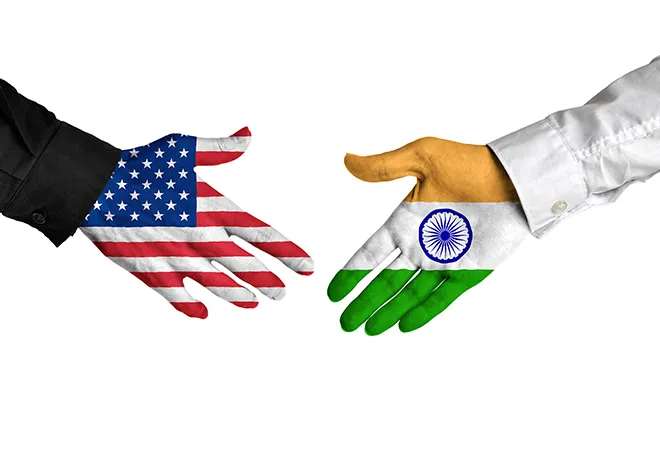
This month, India has once again postponed the imposition of retaliatory duties on US products. This move comes against the backdrop of US Commerce Secretary Wilbur Ross’ recent derision of India’s “overly restrictive market access barriers.” Trade talks have been at a stalemate over inherent differences on access to agriculture goods, dairy products, and data localisation. Another issue raking trade tensions is the Trump administration’s intent to terminate the Generalized System of Preference (GSP) programme with India.
Another issue raking trade tensions is the Trump administration’s intent to terminate the Generalized System of Preference (GSP) programme with India.
India is the biggest beneficiary under the GSP regime, with its goods accounting for “over a quarter of the goods that got duty-free access into the US in 2017.” Further, of all Indian exports to the US in 2017, over 12 percent — worth $5.58 billion — benefitted under the GSP scheme.
With little progress on the trade imbalance between the two countries, the Trump administration’s move to initiate the withdrawal of GSP status for India was set to come into force on 3 May 2019. However, at the request of 25 American lawmakers to the US Trade Representative to not press ahead with the withdrawal, a final decision on the matter seems deferred until further notice.
Meanwhile, a window of opportunity for greater strategic cooperation seems to be emerging.
Strategic relevance of India’s GSP status
As China imposes retaliatory tariffs in response to the Trump administration’s recent declaration of raise in duties on Chinese products to 25 percent, India must convey the rising strategic relevance of its GSP status with respect to the administration’s approach to China.
Beijing and Washington find themselves in a game of chicken: over which party will — and most crucially can — hold out longer. For Beijing, the costs may accentuate, owing to its trade surplus. For Washington, the costs may trickle down to local manufacturers that source cheaply from, and export finished products to China, levying the brunt of tariffs on Americans from both ends. To dampen those costs and wean American manufacturers away from Chinese goods, the Trump administration may be forced to re-evaluate its decision on India’s GSP status.
To dampen those costs and wean American manufacturers away from Chinese goods, the Trump administration may be forced to re-evaluate its decision on India’s GSP status.
According to a recent report released by the Coalition for GSP, a group of American companies and trade associations, as US imports from China have decreased — because of Section 301 tariffs — imports of those products from GSP-designated countries “have increased the most in the first quarter of 2019.” Specifically on India, the report states: “97 percent of increased 2019 GSP imports are on the China Section 301 lists.” To that effect, imports from India of Section 301 list products “increased by USD 193 million (18 percent).”
Therefore, as the report rightly points out, terminating GSP status for countries like India would not only “hurt many American companies and workers that have relied on GSP for years, it would also reduce viable sourcing options for companies looking to buy less from China in response to Section 301 tariffs — thereby undermining the President's own objectives.”
Furthermore, this dichotomy for the US comes at a time when President Trump is increasingly facing a credibility crisis.
Strategic assurances for the vulnerable dealmaker
During his campaign trail and in office, Trump often touted his command over the “Art of the Deal” to deliver “big-league” wins on some of the world’s most pressing challenges like nuclear non-proliferation. Today, Trump’s questionable deal-making skills are at an abysmal display. US Withdrawal from the Iran nuclear deal has only drawn a wedge between America and her Transatlantic allies, and now raised the spectre of another war in the Middle East. Whereas, North Korea continues to insist on simultaneous relief on American “maximum pressure” sanctions in exchange of any denuclearisation effort. It even conducted two missile tests recently. Going into the 2020 presidential elections, many of Trump’s challengers from across the aisle are already making his deal-making skills a talking point.
At this juncture of vulnerability for efficacy of Trump’s ways, India could partly draw from the Chinese playbook. In exchange for relief on GSP, India could offer Trump credible assurances on raising US imports — and thereby effectively institute an incremental approach to resolving persisting issues on the trade front.
In exchange for relief on GSP, India could offer Trump credible assurances on raising US imports — and thereby effectively institute an incremental approach to resolving persisting issues on the trade front.
Back in November 2017, amid opening salvos of the US-China trade war, China infused an incremental approach during Trump’s maiden visit to the country. China not only held back all stops on pomp and pageantry (“state visit-plus” experience) for the image-conscious American president, but also handed him contractual assurances worth $65 billion, which Trump took back as testament to his deal-making abilities.
Initially, this allowed the Chinese to figuratively kick the can down the road and institute an incremental approach. Eventually, as those assurances failed to culminate into a bilateral trade deal or even substantially reduce the deficit between China and the US, the Trump administration chose to double down on its winner-takes-all approach.
India, however, is in a position to offer assurances grounded in recent trends that are only favourable for the US.
Over the past two years, the deficit between the US and India has been decreasing. US exports to India registered a 28 percent increase last year, to effectively bring down the goods trade deficit from $22.9 billion in 2017 to $21.2 billion. Furthermore, this development — favourable to Trump’s singular focus on correcting trade imbalances — is only set to accentuate, given the rising tempo of Indo-US strategic ties. Notably, in the period 2013-17 — relative to the previous five years, US arms exports to India increased by over 550 percent — with the US now assuming the spot of India’s second-largest arms supplier.
Over the past two years, the deficit between the US and India has been decreasing. US exports to India registered a 28 percent increase last year.
Additionally, India has shown credible intent by proposing middle-of-the-road solutions like the offer to reduce duty on imported high-end phones, instead of the US’ demand to revoke the 20 percent duty on all phones. This approach could singularly benefit the US’ export of high-end phones (like Apple iPhones), whereas cutting duty across the board could even benefit cheaper Chinese phones penetrating the Indian market.
Therefore, with an American president facing questions over his “deal-maker” persona, India could leverage emerging opportunities for Indo-US strategic cooperation to institute a gradual, incremental approach to tackling tensions on its trade front.
The views expressed above belong to the author(s). ORF research and analyses now available on Telegram! Click here to access our curated content — blogs, longforms and interviews.




 PREV
PREV


